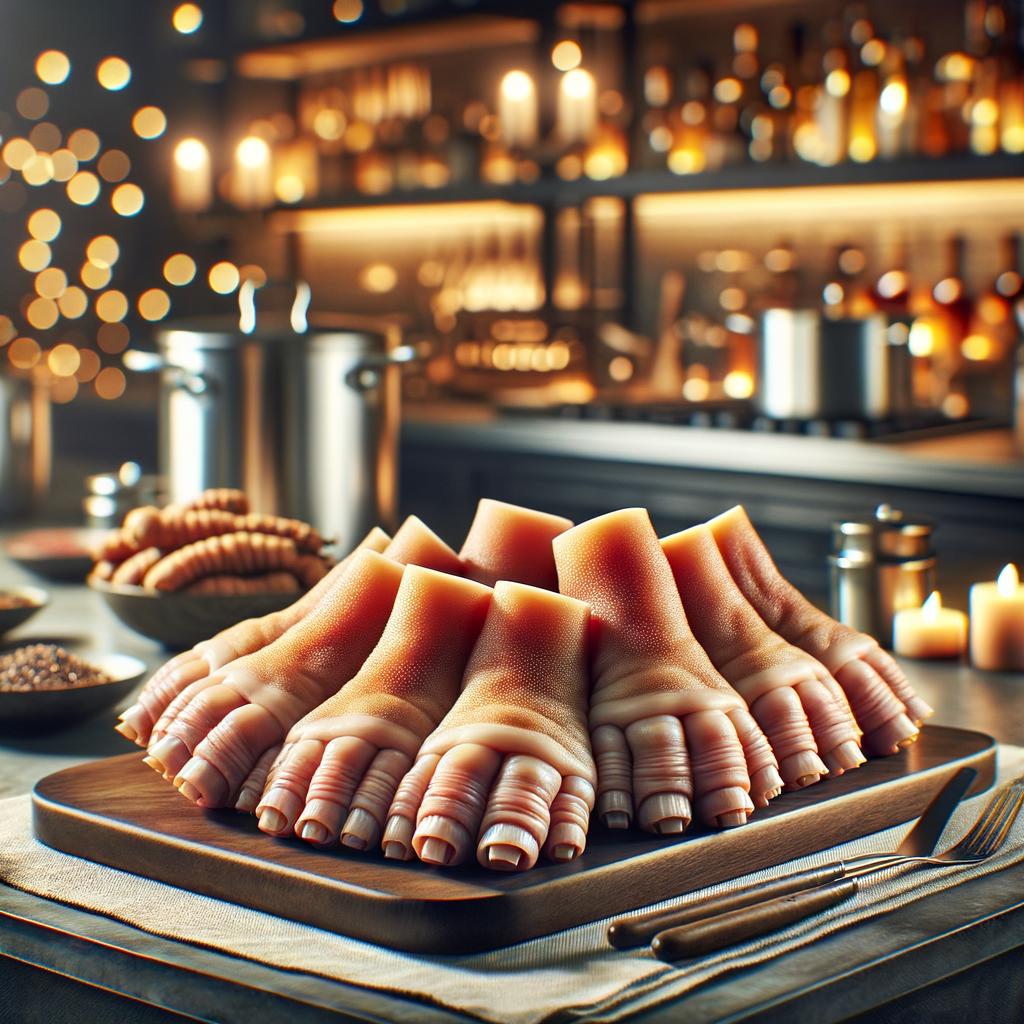Pork Trotters

Description Pork trotters, also known as pig's feet, are a culinary delight that may not be for the faint-hearted, but are a treasure trove of flavors for the adventurous. These pieces of meat, which include the hoof, are a beautiful amalgamation of skin, fat, and connective tissues. They are sturdy, yet yield a succulent, gelatinous texture when cooked over a low flame for an extended period. The flavor profile is robust and porky, with the unique ability to absorb the essence of whatever they're cooked with, resulting in a delectable, savory treat. What sets pork trotters apart is their collagen-rich composition, which imparts a silky, rich mouthfeel to any dish they grace.
Primary Uses Pork trotters are a versatile ingredient, used widely across the globe. In Southern United States, they're often pickled and enjoyed as a snack. In Asia, they're a key component in many dishes like the Chinese braised pork trotters, Korean Jokbal, and the Filipino crispy pata. In Europe, they're used in making traditional dishes like the Spanish Callos and the French pied de cochon. Beyond culinary uses, pork trotters are also used in some cultures for medicinal purposes, believed to aid in the recovery of patients, particularly post-surgery due to their high collagen content.
History The history of pork trotters is a testament to the resourcefulness of our ancestors. In times of scarcity, every part of the animal was used, leading to the discovery of the culinary potential of these humble pig's feet. Over time, they've held a place of honor in comfort cooking, often associated with home and hearth. There's an old Chinese folklore that speaks of a scholar who was so engrossed in his books that he forgot his pork trotters on the stove, only to discover the resulting delicacy when he finally remembered. Over the years, their popularity has grown, with many modern chefs championing them as a symbol of nose-to-tail cooking.
Nutritional Information Pork trotters are a nutritional powerhouse. They're high in collagen, which is beneficial for skin health and joint mobility. They also contain a good amount of protein, along with essential minerals like calcium and magnesium. However, they are also high in fat and cholesterol, so they should be consumed in moderation. When compared to leaner cuts of pork, trotters have a higher collagen and fat content, but lower in muscle protein. Their unique nutritional profile is what makes them a beloved ingredient in many cuisines, offering a distinctive taste and texture that's hard to replicate.

